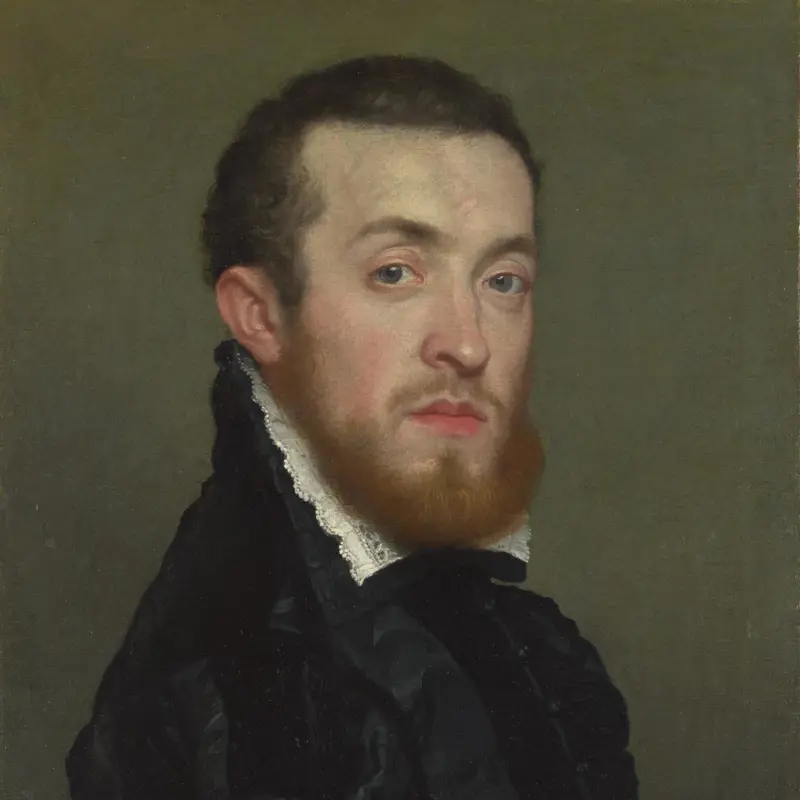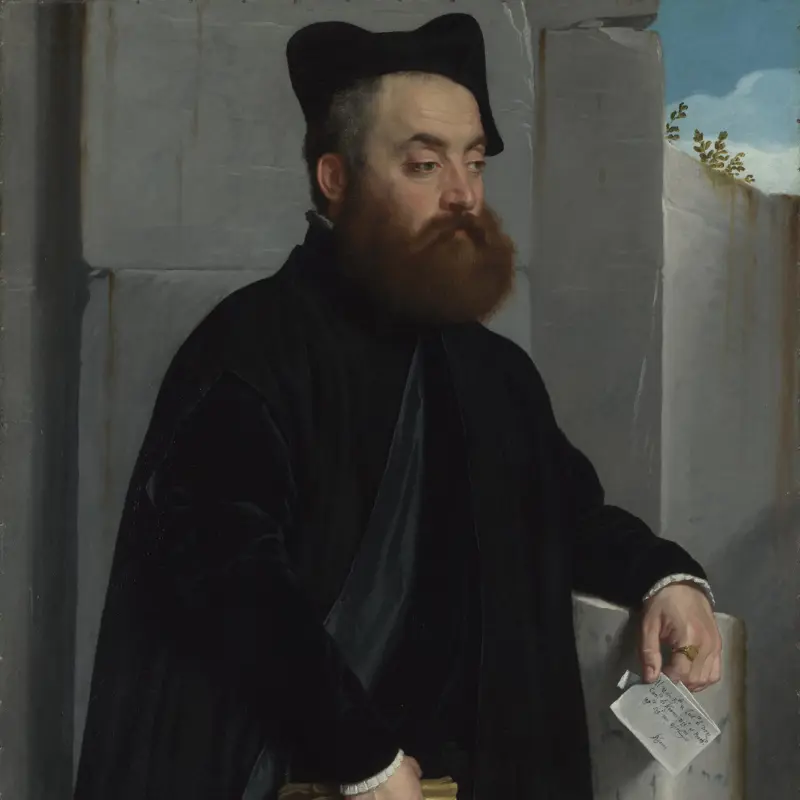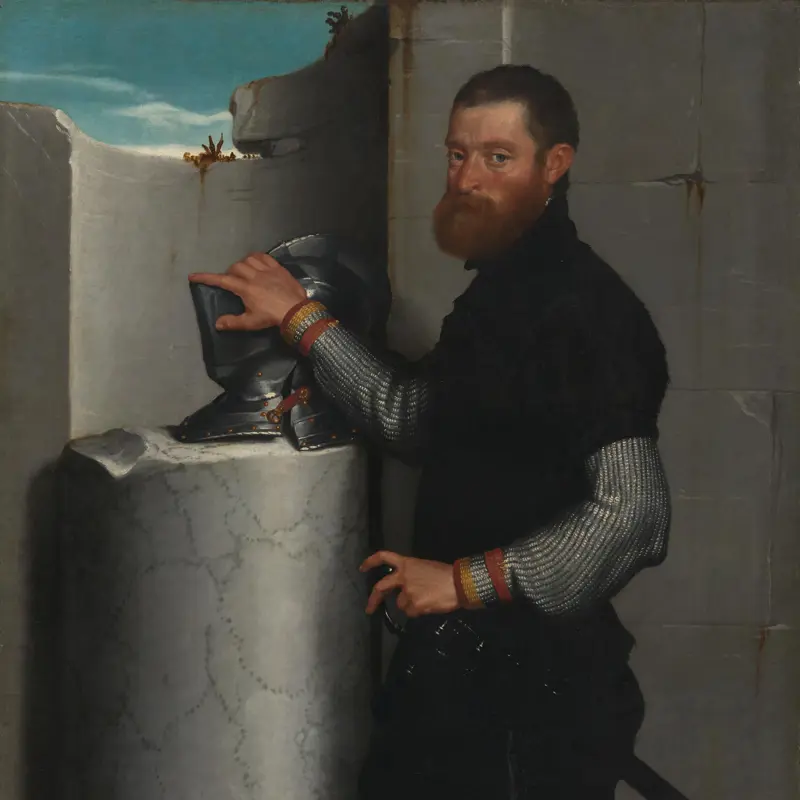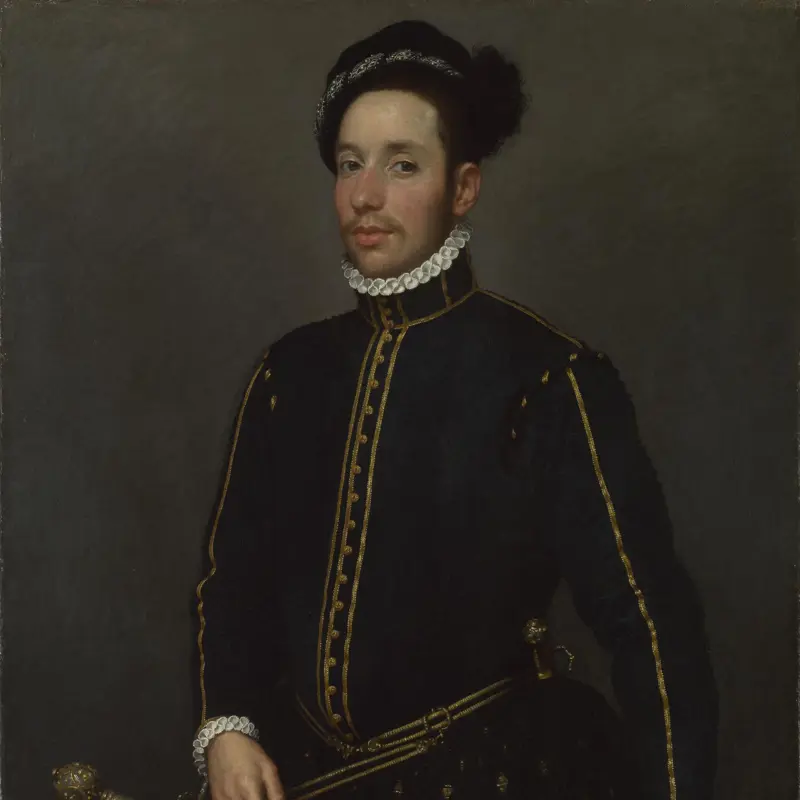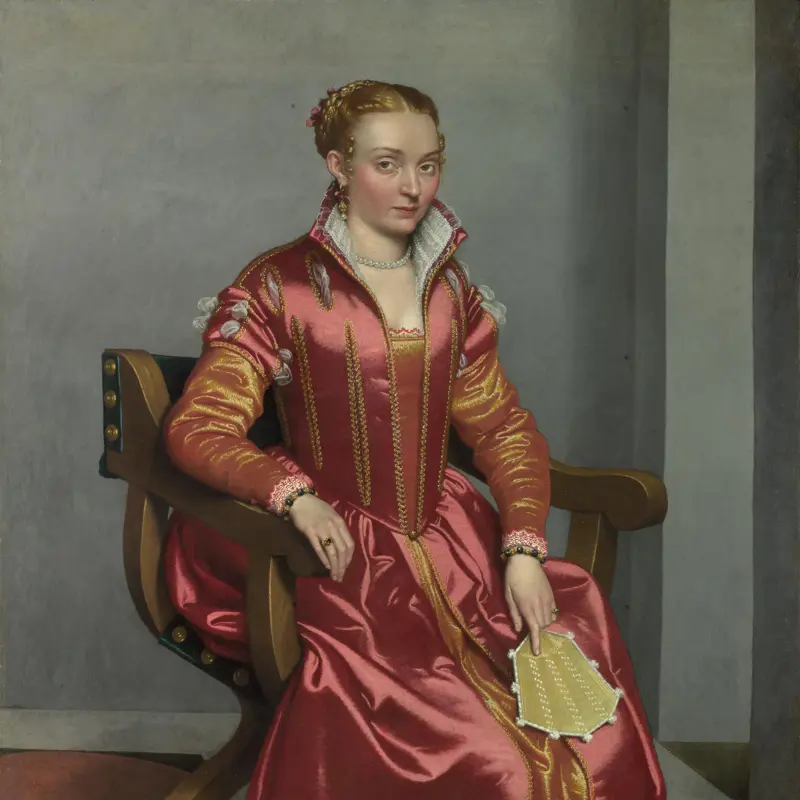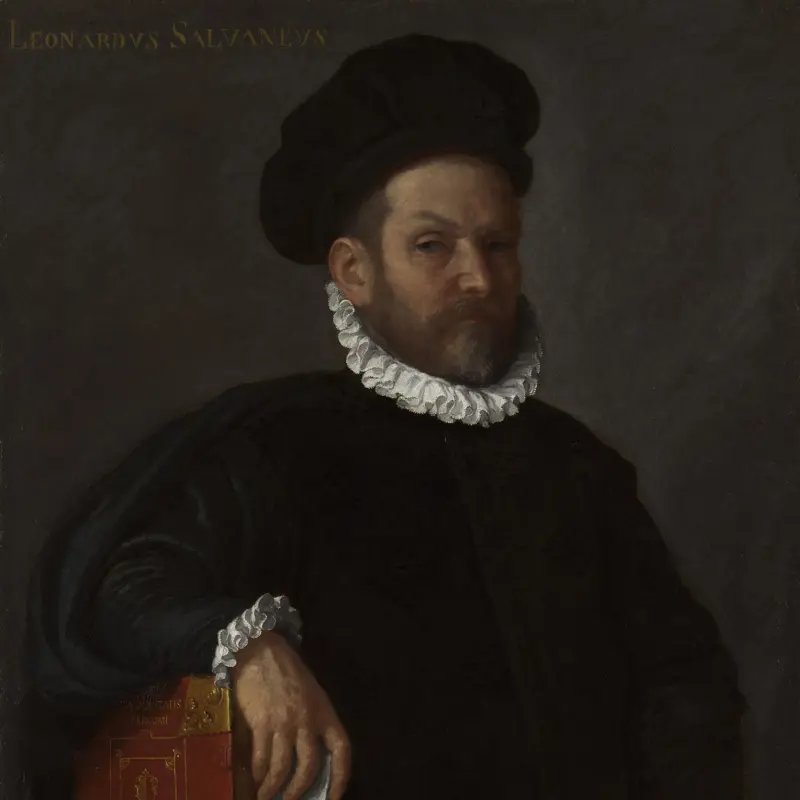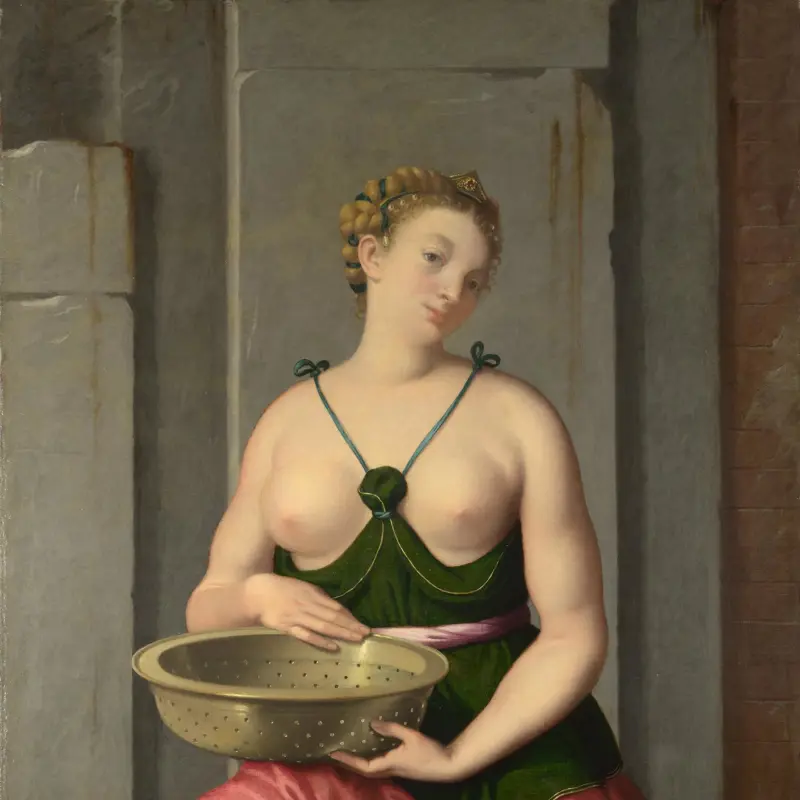Giovanni Battista Moroni, 'A Knight with his Jousting Helmet', about 1554-8
About the work
Overview
This portrait was long known as ‘Il Cavaliere dal Piede Ferito’ (‘The knight with the wounded foot’). But the brace supporting the man’s left foot suggests he was suffering from foot-drop, a fairly common disorder caused by the failure of the ankle muscles. The way in which his plate armour has been carelessly strewn about is very unusual. The ruined setting may be intended to highlight the sitter’s enduring virtues. His rapier and helmet would have been worn for tournaments rather than for warfare.
The sitter is thought to be Conte Faustino Avogadro of Brescia. It is possible that the portrait was made to hang with Moretto’s Portrait of a Man, dated 1526, which possibly depicts Faustino’s father, Gerolamo II Avogadro. Moroni’s portrait ‘La Dama in Rosso’ may be of Faustino’s wife, Contessa Lucia Albani Avogadro. All three paintings came to the National Gallery from the Avogadro collection.
Key facts
Details
- Full title
- A Knight with his Jousting Helmet ('Il Cavaliere dal Piede Ferito', Conte Faustino Avogadro (?) )
- Artist
- Giovanni Battista Moroni
- Artist dates
- 1520/4 - 1579
- Date made
- about 1554-8
- Medium and support
- oil on canvas
- Dimensions
- 202.3 × 106.5 cm
- Acquisition credit
- Bought, 1876
- Inventory number
- NG1022
- Location
- Room 4
- Collection
- Main Collection
- Frame
- 18th-century English Frame
Provenance
Additional information
Text extracted from the ‘Provenance’ section of the catalogue entry in Nicholas Penny, ‘National Gallery Catalogues: The Sixteenth Century Italian Paintings’, vol. 1, ‘Paintings from Bergamo, Brescia and Cremona’, London 2004; for further information, see the full catalogue entry.
Exhibition history
-
2014Giovanni Battista MoroniRoyal Academy of Arts25 October 2014 - 25 January 2015
-
2019Moroni: The Riches of Renaissance PortraitureThe Frick Collection21 February 2019 - 2 June 2019
Bibliography
-
1962Gould, Cecil, National Gallery Catalogues: The Sixteenth Century Italian Schools (excluding the Venetian), London 1962
-
1987Gould, Cecil, National Gallery Catalogues: The Sixteenth Century Italian Schools, London 1987
-
2001
C. Baker and T. Henry, The National Gallery: Complete Illustrated Catalogue, London 2001
-
2004
Penny, Nicholas, National Gallery Catalogues: The Sixteenth Century Italian Paintings, 1, Paintings from Bergamo, Brescia and Cremona, London 2004
About this record
If you know more about this work or have spotted an error, please contact us. Please note that exhibition histories are listed from 2009 onwards. Bibliographies may not be complete; more comprehensive information is available in the National Gallery Library.

